Picture This: Surfer Freezes Breaking Waves in Stunning Shots
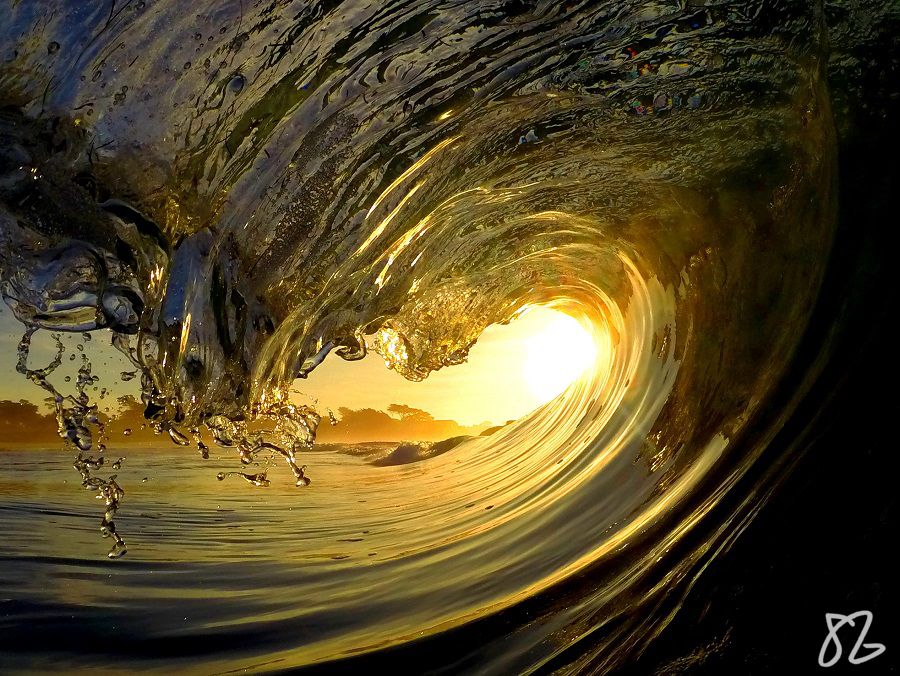
Chasing waves is a way of life for Sean Gravem. After his first scuba lesson, the Pacific Grove, California, photographer got hooked on shooting under the ocean. His images freeze shore-break waves in time, capturing water droplets right before — or after — they turn to foam. For other shots, Gravem dives below the waves to reveal sun-dappled sand. You can almost hear the watery silence.
"I enjoy this genre because every wave is different," Gravem says. "I am always learning from and always fascinated by them."
Live Science interviewed Gravem about how he captures these wave shots.
Live Science: What inspired you to start taking these wave photographs?
Gravem: I would be lying if I didn’t say I was inspired by [Hawaiian wave photographer] Clark Little. Ocean photography had been a hobby for many years but the first time I saw one of his images I knew that wave photography was what I wanted to do. It has been a healthy addiction since. Now, the ocean provides all the inspiration anyone would need. [The Best Cameras of 2016, from Tom's Guide]
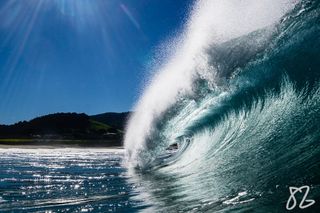
Live Science: What kind of equipment do you use?
Gravem: My go-to setup is a Sony a6000 in a CMT Water Housing with a KNEKTUSA bicep leash. The a6000 is capable of capturing up to 11 fps so it is an excellent camera for wave photography. For mini waves I use a Gopro Hero 3+ Black mounted in a KNEKTUSA trigger and usually shoot in burst mode at 30 fps. For over/unders I use the KNEKTUSA KSD6 dome.
Sign up for the Live Science daily newsletter now
Get the world’s most fascinating discoveries delivered straight to your inbox.
Live Science: What is the process of capturing these waves? How much post-production is involved?
Gravem: To capture wave images, it is much like any other photography — you just have to be in the right place at the right time. Being in that right place involves lots of practice and experience. The standard way to capture a lookout barrel image is to place yourself in front of an oncoming wave and try to duck under the lip as the wave crashes, all while pointing the camera in the right direction, and trying to keep it level. With my Sony/CMT setup I shoot in RAW and edit from there, tweaking contrast, saturation, etc. The same goes for my Gopro/KNEKTUSA setup, only the images are obviously in JPEG and there are a lot more to look through. [Which GoPro Is Right for You?]
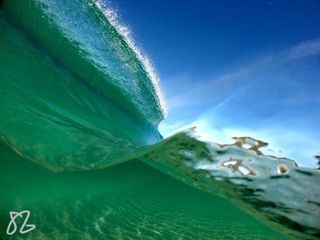
Live Science: What's the biggest challenge in getting these shots to work?
Gravem: The biggest challenge is that the ocean is so unpredictable. Current, tides, weather and swell are always changing and you have to be able to work with all of these together. Studying weather and swell charts helps me to prepare, but that is only part of it. Other issues you have to deal with are water spots on the housing port, crooked horizons, and choosing the right camera settings, all while trying not to get caught out of position.
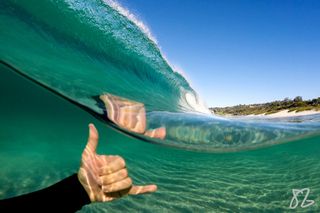
Live Science: Have you had any particularly memorable moments or experiences capturing these images?
Gravem: Too many to count: sharing waves with pods of dolphins, being in perfect waves from sunrise to sundown, awesome days in clear water with family and friends and pushing the limits in XXL swell with a few buddies. Every day in the water is special and there are far too many memorable moments to share here… I could go on forever. There was one particular week last year, at my home break, when the conditions were pristine and every day I shot with friends. [The Best Action Cameras of 2016, from Tom's Guide]
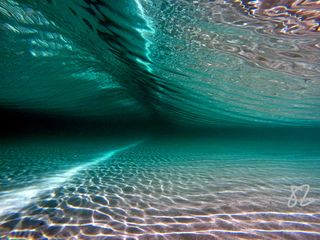
Live Science: Has this line of work inspired you to try anything different or new? What's the next project on the horizon?
Gravem: From the time I started attempting wave photography it has been an addiction. It has inspired me to travel to new places in the world, chasing down perfect waves. It has inspired me to study the ocean more than before. It has also led me to many new friendships. I am friends with a very talented group of ocean photographers who continually inspire me.
Live Science: What's your next project?
Gravem: I have a few shows in the coming months in Davis, California, with the subject "Waves of Monterey Bay."
Follow Stephanie Pappas on Twitter and Google+. Follow us @livescience, Facebook& Google+. Original article on Live Science.

Stephanie Pappas is a contributing writer for Live Science, covering topics ranging from geoscience to archaeology to the human brain and behavior. She was previously a senior writer for Live Science but is now a freelancer based in Denver, Colorado, and regularly contributes to Scientific American and The Monitor, the monthly magazine of the American Psychological Association. Stephanie received a bachelor's degree in psychology from the University of South Carolina and a graduate certificate in science communication from the University of California, Santa Cruz.











